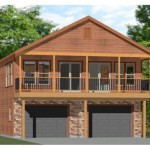Create The Home Of Your Dreams: House Plans And Floors
Designing the home of one's dreams is a significant undertaking, involving careful consideration of numerous factors. The foundation of any successful home design lies in well-conceived house plans and thoughtfully selected flooring options. These two elements work in concert to define not only the aesthetic appeal of a residence but also its functionality, comfort, and long-term value. A deliberate approach to planning, considering individual needs and lifestyle, is crucial for creating a living space that is both aesthetically pleasing and practical for everyday living.
The process of planning a home frequently begins with identifying personal requirements and preferences. How many bedrooms are needed? Is a home office essential? What style of kitchen best suits the homeowner's culinary habits? These fundamental questions serve as the starting point for developing house plans that reflect the inhabitants’ unique lifestyles. Furthermore, understanding the site’s limitations and opportunities, such as topography, orientation to the sun, and local building codes, is necessary for developing a viable plan. This groundwork informs the design process, ensuring the final product aligns with both personal desires and practical constraints.
Flooring plays an equally vital role in shaping the character of a home. It provides a surface for daily activities and significantly contributes to the overall aesthetic. Factors such as durability, maintenance requirements, and aesthetic appeal must be analyzed when choosing flooring materials. The material should align with the function of each room. For example, moisture-resistant options are often preferred for bathrooms and kitchens, while softer, more comfortable choices might be prioritized in bedrooms and living areas.
Understanding House Plan Essentials
House plans are detailed architectural drawings that serve as the blueprint for constructing a home. They should include a comprehensive overview of the property, including dimensions, room layouts, and structural elements. A complete set of house plans typically includes several distinct types of drawings. Floor plans depict the arrangement of rooms on each level, including the location of walls, doors, windows, and fixtures. Elevation drawings provide a view of the exterior of the house from each side, showing the overall design and architectural style. Foundation plans outline the construction of the foundation, including details about the footings, walls, and supporting structures. Finally, electrical and plumbing plans illustrate the location of wiring, outlets, pipes, and fixtures throughout the house.
Selecting the right house plan depends on several factors. The size of the family or anticipated number of occupants is a key consideration. The plan should accommodate current and future needs, providing ample space for living, sleeping, and working. The architectural style of the house should align with personal preferences and the surrounding neighborhood. Choices might range from traditional styles like Colonial and Victorian to more modern designs like contemporary and minimalist. The budget is crucial, as the complexity of the design directly impacts construction costs. A simpler plan with fewer custom features will generally be more cost-effective than a highly detailed and elaborate design.
Moreover, understanding the terminology used in house plans is beneficial. "Square footage" refers to the total area of the house, measured in square feet. "Setbacks" are the minimum distances required between the house and property lines, as mandated by local zoning regulations. "Load-bearing walls" are structural walls that support the weight of the roof and upper floors. Recognizing these terms helps to interpret the plans accurately and make informed decisions during the design and construction phases.
Exploring Flooring Options and Their Impact
The selection of flooring materials is a critical aspect of home design, influencing both the aesthetics and practicality of the space. The market offers a vast array of options, each with its unique characteristics and advantages. Hardwood flooring is a classic choice, prized for its natural beauty, durability, and timeless appeal. It is available in a variety of wood species, each with its own grain patterns and color variations. Hardwood is relatively easy to maintain and can be refinished multiple times, extending its lifespan. However, it can be susceptible to scratches and dents and may not be suitable for areas with high moisture levels.
Tile flooring is another popular option, particularly in bathrooms, kitchens, and entryways. It is highly durable, water-resistant, and easy to clean. Tile comes in a wide range of materials, including ceramic, porcelain, and natural stone. Each material offers different levels of durability and aesthetic appeal. Porcelain tile is known for its exceptional strength and resistance to moisture, making it an ideal choice for high-traffic areas and wet environments. Natural stone tiles, such as granite and marble, offer a luxurious look but may require more maintenance and sealing to prevent staining.
Carpet offers warmth, comfort, and sound insulation, making it a popular choice for bedrooms and living rooms. It is available in a variety of styles, colors, and textures, allowing for a wide range of design possibilities. However, carpet can be more difficult to clean than other flooring options and may require regular vacuuming and professional cleaning to maintain its appearance. Synthetic carpets, such as nylon and polyester, are more stain-resistant and durable than natural fiber carpets, such as wool.
Laminate flooring is a cost-effective alternative to hardwood and tile, offering a similar look at a lower price point. It is made from layers of composite material topped with a photographic image of wood or tile. Laminate is relatively easy to install and maintain and is resistant to scratches and stains. However, it is not as durable as hardwood or tile and cannot be refinished. Vinyl flooring is another affordable option that is highly water-resistant and easy to clean. It is available in a variety of styles, including sheet vinyl, vinyl tiles, and luxury vinyl planks (LVP). LVP is a popular choice for its realistic wood-look appearance and durability.
Integrating House Plans and Flooring Choices
The most effective home designs consider house plans and flooring choices in tandem. The architectural style of the house should influence the selection of flooring materials, and vice versa. For example, a traditional-style home might benefit from classic hardwood floors or elegant tile in areas such as the entryway and dining room. A modern home might feature sleek concrete floors or minimalist tile to complement its contemporary aesthetic. The layout of the house should also be considered when choosing flooring. Open-concept floor plans may benefit from a consistent flooring material throughout the main living areas to create a cohesive look. Smaller, more defined spaces may allow for more varied flooring choices, creating distinct zones within the house.
The practicality of flooring choices should also be considered in relation to the house plan. High-traffic areas, such as hallways and entryways, require durable and easy-to-clean flooring materials. Wet areas, such as bathrooms and kitchens, necessitate water-resistant options. Bedrooms and living rooms, where comfort is a priority, may benefit from softer flooring choices, such as carpet or engineered wood. The lighting in each room should also be considered, as different flooring materials reflect light differently. Lighter-colored flooring can brighten up dark spaces, while darker flooring can create a more intimate and cozy atmosphere.
It is also important to consider the budget when integrating house plans and flooring choices. Premium flooring materials can significantly increase the overall cost of the project. Prioritizing flooring upgrades in key areas, such as the kitchen and master bathroom, while opting for more cost-effective options in less visible areas, can help to manage the budget effectively. Ultimately, the goal is to create a cohesive and functional living space that reflects your personal style and meets your individual needs. By carefully considering house plans and flooring choices, one can create a home that is both beautiful and practical, tailored to the requirements and preferences of its inhabitants.

5 Tips To Build Your Dream Home And Stay On Budget Dfd House Plans Blog

Make Your Dream House Floor Plans By Architect Rehan Fiverr

Complete Floor Plan For Your Dream Home Using Autocad Upwork

Build Your Dream Home With These 13 Hot New House Plans Blog Dreamhomesource Com

Ai Floor Plan Generator Best Interior Design Tool

Sims 4 House Layouts And Floor Plans To Build Your Dream Home Mom S Got The Stuff

Free House Design Home And Plans

Dream House Plans Designs Customizable Home Floor

Create A Floor Plan For Your Dream House Within 4 Hours By Builders Pro Fiverr

Modern House Floor Plans Check Out How To Build Your Dream
Related Posts








